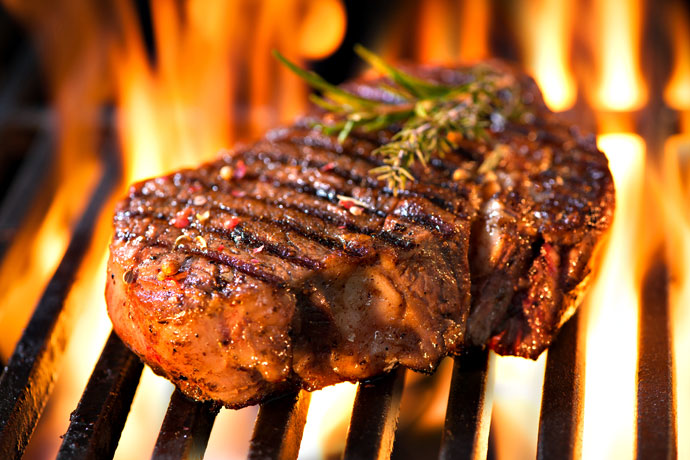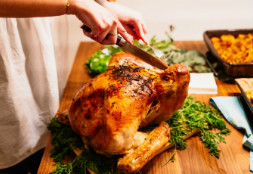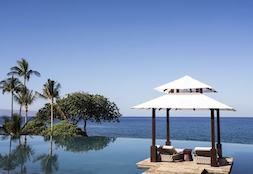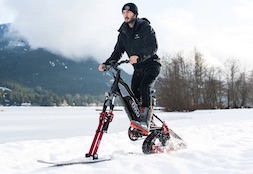
There may be a time this summer when you’re staring into a wall of hot flames and you’ll be forced to
make a quick decision.
Do you take that steak off now, or give it a couple more minutes?
To make cooking over an open fire a bit easier on you, we enlisted six people who are really good at it to provide some tips, advice and general insights. People who are not just people, but chefs, and ones who cook over live fire at their respective restaurants.
In this corner, we’ve got Chicago’s Rick Bayless repping his newly opened Leña Brava. The other five corners—guess we’re dealing with a hexagon here—are occupied by Josiah Citrin (Charcoal Venice, LA), Chris Feldmeier (Moruno, LA), Mark Hellyar (Momotaro, Chicago), Matt Sliwinski (The Promontory, Chicago) and Matt McCormick (Twin Smokers BBQ, Atlanta).
If you learn one thing from this exercise, let it be the many things here.
Favorite meat to cook over live fire?
Rick Bayless: Right now, it’s not meat at all. I’m obsessed with cooking a big piece of butterflied fish over live fire. Usually sea bass, but snapper and branzino are great, too. Find a hinged fish basket and it makes the job easier.
Josiah Citrin: I really enjoy slow cooking, so my favorite meats to cook are the following: a thick cut of steak, specifically a porterhouse or a bone-in double ribeye. I also enjoy cooking short rib. At Charcoal Venice, we smoke the short rib for 12 hours and then grill it over a high flame to finish. The slow cooking process is great because it takes time, patience and precision. Seeing the final product is very rewarding.
Chris Feldmeier: Chicken thighs, because I feel like they’re often not cooked correctly over live fire, and when cooked properly they have the most delicious transformation of any meat over live fire.
Mark Hellyar: My favorite meats to cook over a live fire are hearts (we serve jidori chicken hearts on a skewer at Momotaro), beef saddle and wild salmon.
Matt Sliwinski: Any sort of fish, specifically bluefin tuna. The contrast of the live fire with a delicate fish makes for an unexpected cooking method.
Matt McCormick: Brisket. It’s a tough cut that when smoked perfectly has an amazingly delicate texture. The combination of broken-down protein, slightly rendered fat and the right amount of smoke is unlike any other meat preparation.
Marinade, dry rub, neither or something else entirely?
Rick Bayless: That really depends, but I’ve found red or green chile adobos can be used to marinate just about anything.
Josiah Citrin: I usually don’t like to marinate my meat. I prefer to use salt and pepper and then sometimes add side sauces.
Chris Feldmeier: For those chicken thighs, I prefer to use a very thick marinade which incorporates a lot of spices plus citrus juice. And salt your meat ahead of time rather than right before it goes on the grill.
Mark Hellyar: I am a big proponent of getting a great cut of meat or fish and then only seasoning it with salt to let the smoke sing.
Matt Sliwinski: We do a lot of brining (saturate with salty water), actually. This seasons the meat and also allows it to stay tender and moisturized.
Matt McCormick: When it comes to barbecue, for me, dry rub is the only way to go. The rub, and the moisture it pulls from the exterior of the meat, is an important factor in attracting smoke, which builds the crust and the smoke ring. Great barbecue should not need sauce.
Temperature to shoot for?
Rick Bayless: Invest in a thermometer and you’ll never overcook anything ever again.
Josiah Citrin: For our smoked items, we shoot for 212 to 220 degrees.
Chris Feldmeier: I’ve never temped a grill in my entire life. The temperature is right when it’s right.
Mark Hellyar: Spots on the grill may be as hot as 800 degrees, but I’ll only cook smaller items in those spots because larger items will cook too fast on the exterior before the interior is cooked properly. With large cuts containing fat, you can cook the meat slightly away from the flame to cook it slowly and more evenly.
Matt Sliwinski: The live fire is between 600 and 800 degrees, which is a little too hot for cooking fish. We cook it over the embers instead, which are around 500 degrees.
Matt McCormick: For a protein that cooks for 12 hours, like a pork butt or brisket, a lower temperature is best. 225 degrees Fahrenheit is a good guideline for smoking. For chicken or ribs, I cook at 250.
Do you measure that temperature or just eyeball it?
Rick Bayless: I suppose at this point I could just let instinct take over and eyeball it. But why chance it? Use the thermometer.
Josiah Citrin: Eyeball it.
Chris Feldmeier: See above. [Ed. note: He eyeballs it.]
Mark Hellyar: I typically just eyeball it and maneuver over hot spots.
Matt Sliwinski: It is an interesting challenge. Consistency is the hardest thing to achieve when cooking with an open fire. Hearth cooking is about learning how to tame the flame and about shaping fire into a controllable medium. [Ed. note: Sounds like he eyeballs it.]
Matt McCormick: It’s all about touch with BBQ. I can tell when my briskets are done by the jiggle of the fat cap on top, and the give on the underside when I pick it up.
What’s your favorite fuel source—charcoal? Wood? Other?
Rick Bayless: Always wood. Nothing compares to the elemental flavor of food cooked over wood fire.
Josiah Citrin: I prefer charcoal over wood, although I like to add a few chunks of wood in the charcoal because it gives off a smoky flavor.
Chris Feldmeier: California oak wood, because of the amount of embers and coals it produces without flaring up.
Mark Hellyar: I use a combination of bincho (traditional Japanese charcoal) and wood, such as hickory or oak.
Matt Sliwinski: The wood we like to use in the hearth is oak.
Matt McCormick: It’s important to pair the protein with a profile of wood smoke that naturally enhances the flavor of the meat. I like to use more delicate woods like pecan and applewood with less fatty, more mild proteins. For a well-marbled, more intensely flavored cut like brisket, I like to use a combination of mesquite and oak, staying true to a more Texas approach.
One secret tip to keep in mind when manning the flames?
Rick Bayless: Let the grates heat up. You’ll get those beautiful grill marks and you’ll ensure that your food won’t stick.
Josiah Citrin: When you’re cooking meat, remember to keep moving, rotating and resting it. I’ve used this method at the beach and at campfires many times. Another thing you can do at a campfire is bake potatoes directly in the fire.
Chris Feldmeier: Never add too much wood at one time.
Mark Hellyar: Make sure to tend to the fire constantly, and position the protein in proximity to the flame based on the larger sizes of that singular protein.
Matt Sliwinski: Avoid the open flame. When you grill over the coals, or even place food right onto them, you get a cleaner result as there isn’t as much smoke and soot.
Matt McCormick: The wood is as important an ingredient as the meat. It needs to be clean, dry and beautiful. Also, don’t forget the bourbon.
Do you take that steak off now, or give it a couple more minutes?
To make cooking over an open fire a bit easier on you, we enlisted six people who are really good at it to provide some tips, advice and general insights. People who are not just people, but chefs, and ones who cook over live fire at their respective restaurants.
In this corner, we’ve got Chicago’s Rick Bayless repping his newly opened Leña Brava. The other five corners—guess we’re dealing with a hexagon here—are occupied by Josiah Citrin (Charcoal Venice, LA), Chris Feldmeier (Moruno, LA), Mark Hellyar (Momotaro, Chicago), Matt Sliwinski (The Promontory, Chicago) and Matt McCormick (Twin Smokers BBQ, Atlanta).
If you learn one thing from this exercise, let it be the many things here.
Favorite meat to cook over live fire?
Rick Bayless: Right now, it’s not meat at all. I’m obsessed with cooking a big piece of butterflied fish over live fire. Usually sea bass, but snapper and branzino are great, too. Find a hinged fish basket and it makes the job easier.
Josiah Citrin: I really enjoy slow cooking, so my favorite meats to cook are the following: a thick cut of steak, specifically a porterhouse or a bone-in double ribeye. I also enjoy cooking short rib. At Charcoal Venice, we smoke the short rib for 12 hours and then grill it over a high flame to finish. The slow cooking process is great because it takes time, patience and precision. Seeing the final product is very rewarding.
Chris Feldmeier: Chicken thighs, because I feel like they’re often not cooked correctly over live fire, and when cooked properly they have the most delicious transformation of any meat over live fire.
Mark Hellyar: My favorite meats to cook over a live fire are hearts (we serve jidori chicken hearts on a skewer at Momotaro), beef saddle and wild salmon.
Matt Sliwinski: Any sort of fish, specifically bluefin tuna. The contrast of the live fire with a delicate fish makes for an unexpected cooking method.
Matt McCormick: Brisket. It’s a tough cut that when smoked perfectly has an amazingly delicate texture. The combination of broken-down protein, slightly rendered fat and the right amount of smoke is unlike any other meat preparation.
Marinade, dry rub, neither or something else entirely?
Rick Bayless: That really depends, but I’ve found red or green chile adobos can be used to marinate just about anything.
Josiah Citrin: I usually don’t like to marinate my meat. I prefer to use salt and pepper and then sometimes add side sauces.
Chris Feldmeier: For those chicken thighs, I prefer to use a very thick marinade which incorporates a lot of spices plus citrus juice. And salt your meat ahead of time rather than right before it goes on the grill.
Mark Hellyar: I am a big proponent of getting a great cut of meat or fish and then only seasoning it with salt to let the smoke sing.
Matt Sliwinski: We do a lot of brining (saturate with salty water), actually. This seasons the meat and also allows it to stay tender and moisturized.
Matt McCormick: When it comes to barbecue, for me, dry rub is the only way to go. The rub, and the moisture it pulls from the exterior of the meat, is an important factor in attracting smoke, which builds the crust and the smoke ring. Great barbecue should not need sauce.
Temperature to shoot for?
Rick Bayless: Invest in a thermometer and you’ll never overcook anything ever again.
Josiah Citrin: For our smoked items, we shoot for 212 to 220 degrees.
Chris Feldmeier: I’ve never temped a grill in my entire life. The temperature is right when it’s right.
Mark Hellyar: Spots on the grill may be as hot as 800 degrees, but I’ll only cook smaller items in those spots because larger items will cook too fast on the exterior before the interior is cooked properly. With large cuts containing fat, you can cook the meat slightly away from the flame to cook it slowly and more evenly.
Matt Sliwinski: The live fire is between 600 and 800 degrees, which is a little too hot for cooking fish. We cook it over the embers instead, which are around 500 degrees.
Matt McCormick: For a protein that cooks for 12 hours, like a pork butt or brisket, a lower temperature is best. 225 degrees Fahrenheit is a good guideline for smoking. For chicken or ribs, I cook at 250.
Do you measure that temperature or just eyeball it?
Rick Bayless: I suppose at this point I could just let instinct take over and eyeball it. But why chance it? Use the thermometer.
Josiah Citrin: Eyeball it.
Chris Feldmeier: See above. [Ed. note: He eyeballs it.]
Mark Hellyar: I typically just eyeball it and maneuver over hot spots.
Matt Sliwinski: It is an interesting challenge. Consistency is the hardest thing to achieve when cooking with an open fire. Hearth cooking is about learning how to tame the flame and about shaping fire into a controllable medium. [Ed. note: Sounds like he eyeballs it.]
Matt McCormick: It’s all about touch with BBQ. I can tell when my briskets are done by the jiggle of the fat cap on top, and the give on the underside when I pick it up.
What’s your favorite fuel source—charcoal? Wood? Other?
Rick Bayless: Always wood. Nothing compares to the elemental flavor of food cooked over wood fire.
Josiah Citrin: I prefer charcoal over wood, although I like to add a few chunks of wood in the charcoal because it gives off a smoky flavor.
Chris Feldmeier: California oak wood, because of the amount of embers and coals it produces without flaring up.
Mark Hellyar: I use a combination of bincho (traditional Japanese charcoal) and wood, such as hickory or oak.
Matt Sliwinski: The wood we like to use in the hearth is oak.
Matt McCormick: It’s important to pair the protein with a profile of wood smoke that naturally enhances the flavor of the meat. I like to use more delicate woods like pecan and applewood with less fatty, more mild proteins. For a well-marbled, more intensely flavored cut like brisket, I like to use a combination of mesquite and oak, staying true to a more Texas approach.
One secret tip to keep in mind when manning the flames?
Rick Bayless: Let the grates heat up. You’ll get those beautiful grill marks and you’ll ensure that your food won’t stick.
Josiah Citrin: When you’re cooking meat, remember to keep moving, rotating and resting it. I’ve used this method at the beach and at campfires many times. Another thing you can do at a campfire is bake potatoes directly in the fire.
Chris Feldmeier: Never add too much wood at one time.
Mark Hellyar: Make sure to tend to the fire constantly, and position the protein in proximity to the flame based on the larger sizes of that singular protein.
Matt Sliwinski: Avoid the open flame. When you grill over the coals, or even place food right onto them, you get a cleaner result as there isn’t as much smoke and soot.
Matt McCormick: The wood is as important an ingredient as the meat. It needs to be clean, dry and beautiful. Also, don’t forget the bourbon.




